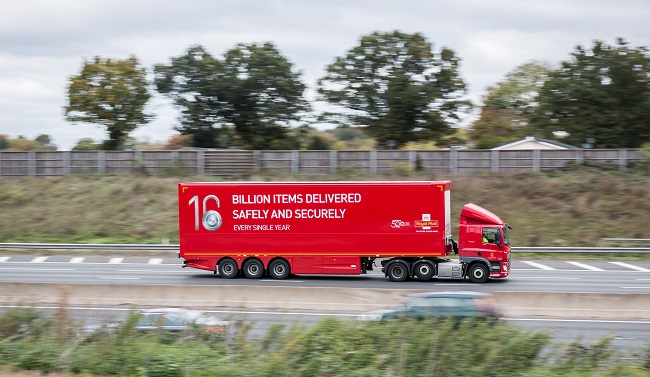
It’s been a busy week for Royal Mail, who came under fire from its appointed contractor for choosing ‘heavily subsidised road haulage’ over rail, and stated it was grounding its air service.
Royal Mail, still owned by International Distribution Services ahead of a £3.5 billion deal to sell to Daniel Kretinsky, said it was bringing its rail freight contract with DB Cargo UK to an end from 10 October 2024, seven months early, and ending flights connecting the Home Counties with Scotland and Northern Ireland.
The rail decision sparked a furious response from DB Cargo UK, who operate the service for Royal Mail connecting North Lanarkshire’s Shieldmuir mail terminal with distribution centres in Daventry, London and Warrington.
In a statement, its CEO Andrea Rossi said the ‘Royal Mail has officially informed us that it is to cease all its rail freight activities with effect from 10th October 2024’.
He continued: “As a result, we will now be seeking urgent talks with the new Labour Government, policymakers and other key industry stakeholders, to see what more can be done to level the playing field between rail freight and the heavily subsidised road haulage sector.”
When Transport News asked about the reference to ‘heavily subsidised road haulage sector’, a spokesperson for DB cargo UK said: “This reference alludes to the fact that while track access charges increase every year in line with inflation, road fuel duty has not been increased for more than a decade, creating an unlevel playing field.”
However, Royal Mail has sought to clarify its position. A spokesperson said: “Royal Mail will continue to use rail services to transport mail across the country, however our own freight trains are at the end of their operational lives. The trains are almost 30 years old and it is increasingly difficult to secure parts for maintenance and the routes we need to meet our service requirements.
“To improve reliability, increase cost effectiveness and remain consistent with our environmental goals, over the coming months we will cease operating our own trains whilst continuing to use a mix of rail, road and air to transport mail to all corners of the UK.”
So, what does this mean for road haulage. Its clear commercial rail operators will play a part and it is thought the revamp will create 30 additional full-time driving jobs with Royal Mail, and bring ‘improved reliability and additional cost benefits’.
Parcel freight between the Scottish central belt and England is a competitive sector, so Royal Mail will have the pick of potential partners with several companies already expressing an interest should it need additional support to move letters and parcels across the border.
And it is not just rail that Royal Mail has curtailed, it has also announced plans to reduce the number of domestic flights it operates to minimise carbon emissions and boost reliability for customers.
Royal Mail has been chartering aircraft flights since the 1960s between London and Scotland and Northern Ireland.
It said the move would save 30,000 tonnes of carbon dioxide equivalent per year and help meet the growing demand for next day deliveries.
Using fleet vehicles instead of planes would also mean it can move more during busy periods as they are less likely to be delayed by bad weather and are not as capacity-constrained.
Royal Mail said it would end 18 domestic flights, which would help meet its target of being net zero by 2040. Alistair Cochrane, COO at Royal Mail, said: “Not only will this reduce carbon emissions, transporting more mail by road will also help us provide a more reliable service for customers and increase our capacity to meet the increasing demand for next day parcel deliveries.”
Royal Mail’s HGV fleet is partly run on hydrotreated vegetable oil, a renewable alternative to diesel that reduces up to 90% of direct greenhouse gas emissions.
The company’s red vans are also the UK’s largest electric vehicle delivery fleet, with around 5,000 rolled out.

